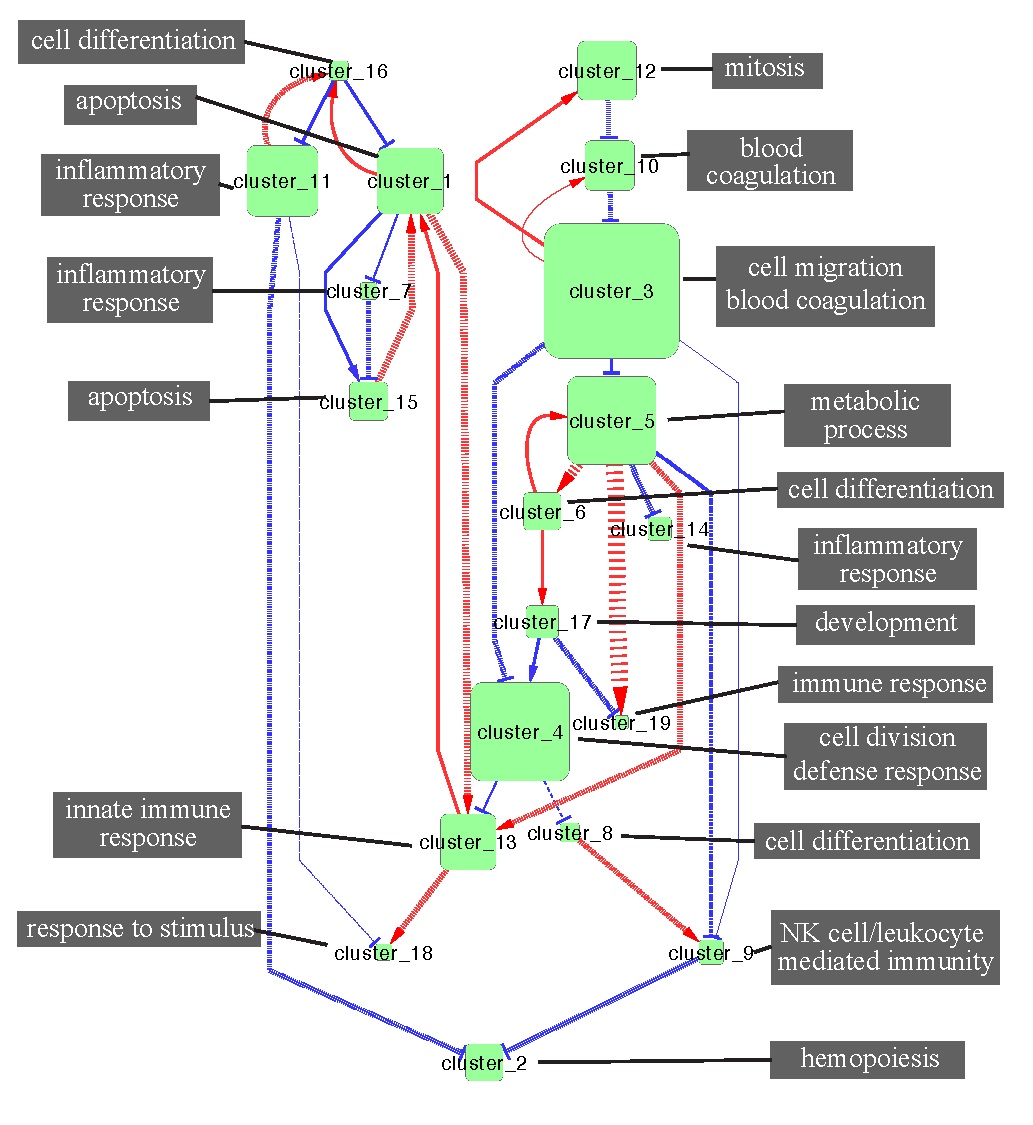Advanced Computing, Mathematics and Data
Research Highlights
November 2012
Predicting the Future for Stroke Victims
Computer model enables better understanding of what happens during and after stroke

A functional network model of processes important during neuroprotection and stroke, and how they might interact with each other.
Results: At the moment that someone is suffering a stroke, the immediate concern is getting them stabilized. Once the initial attack has passed, additional treatment and preventive measures can be implemented. Understanding what's happening during the actual event, and in the subsequent hours and days, will help improve the effectiveness of the post-attack treatment plan, and also help identify methods of neuroprotection—that is, administer treatments to protect against a stroke in advance for potentially at-risk individuals. Computational biology researchers at Pacific Northwest National Laboratory developed a model for predicting what's happening during a stroke, how the process evolves over time, the potential outcomes, and the effects of different treatment options.
The work was featured in the journal PLOS Computational Biology.
Why It Matters: The ability to examine strokes and other biological processes, through the use of computer simulations rather than after the fact on actual organisms, may significantly accelerate how quickly discoveries can be made in fighting diseases. The ability to model and simulate different treatments prior to administering them to a patient can help predict with more certainty which therapeutic approaches may be the most effective.
"This is the first step in being able to suggest {to health care providers} that if you do X and Y, you'd get a much bigger effect than what you're currently doing," said Dr. Jason McDermott, a PNNL computational biologist and lead author on the paper.
Methods: The team developed novel mathematical approaches for extending existing methods of determining causal relationships between genes that are driving biological processes. They implemented ordinary differential equations—a process for describing how things change over time—to improve their ability to infer what these gene relationships might look like and to allow more dynamic simulation of these biological processes over time.
What's Next: The team is looking at improving the model to simulate events that are happening during a biological process for which there isn't pre-existing data. Additionally, they plan to test the effect of adding drugs to a treatment plan and also will be looking at micro RNA molecules that currently aren't included in the model.
Acknowledgments
This work was supported by a grant from the National Institutes of Health.
Research Team: Jason E. McDermott, Kenneth Jarman, Ronald Taylor, Mary Lancaster, Harish Shankaran, and Antonio Sanfilippo, PNNL; Keri B. Vartanian, Susan L. Stevens, and Mary P. Stenzel-Poore, Oregon Health & Science University.
Reference: McDermott JE, KD Jarman, RC Taylor, MJ Lancaster, KB Vartanian, SL Stevens, M Stenzel-Poore, and AP Sanfilippo. 2012. "Modeling Dynamic Regulatory Processes in Stroke." PLoS Computational Biology 8(10):e1002722. DOI:10.1371/journal.pcbi.1002722.
